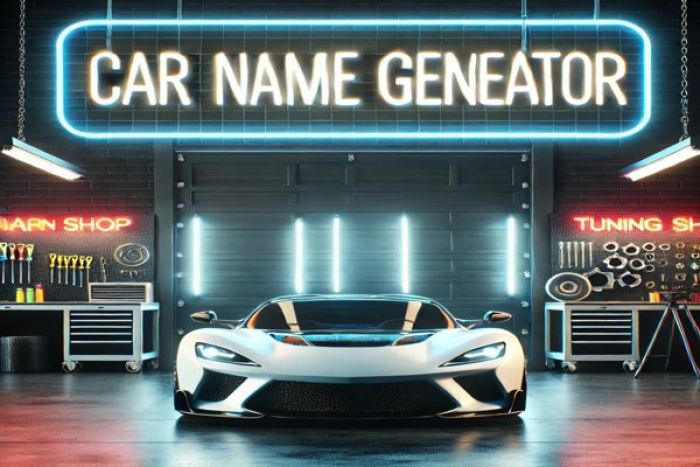Are you perplexed as to why your car won't restart after only turning its engine off for 30 minutes? Don't worry because we have conducted research to identify the top causes of your car not starting.
Engine start battery problems highlights
- Level of urgency:Medium
- Can you drive?Yes
- DIY inspection:Possible
- DIY repair:Possible
- Price for repair:$150 - $250
- Common Reasons:Battery is dying
- Ways to fix:Charge the battery with a tender, replace the battery

Ignition System Problem
The ignition system of a vehicle is important because it helps start the engine. The main parts of the ignition system are the battery, starter motor, induction coil, spark plugs, and ignition control module (ICM). If one of these parts is not working properly, it can result in a hard start after a car is only left sitting for 30 minutes.
Due to the many parts making up the ignition system, diagnosing a problem there can be hard at times, especially if there are no visible signs of wear or your OBDII scanner is not pointing to a specific part. However, these factors are the most common causes of ignition system problems:
1. Battery Totally Discharged
First and foremost, see to it that the battery is still functioning well and installed properly. You can check if it can still hold a charge with a voltmeter.
If the voltmeter reading is 12.6 volts or above, then it's still working as it should. However, if the numbers are between 12 to 12.4 volts, it may be partially discharged and you may still be able to jumpstart it. Anything below 12 volts is a sign that you have to change it.
The main and most important function of a car battery is to provide the energy required to crank the engine and power up all electrical systems of your car. If its no longer capable of holding a charge, it should be replaced immediately.
Likewise, examine the cables and terminals of the battery if they are dirty or corroded. If the said parts are simply contaminated by dirt, disconnect the battery from the car and clean its cables and terminals using a clean cloth or paper towel.
You may apply a pinch of baking soda to the corroded areas if the dirt build-up is hard to remove. To activate the baking soda and trigger a chemical process that will eliminate the corrosion, add a small amount of water. Then, clean and dry the area using a paper towel or soft cloth. Lastly, scrub the part with a sponge to remove any leftover grime.
If the rust has already eaten away the metal components of the wires, connectors, and battery, they will have to be replaced.
2. Starter Motor Failure
A starter motor is a device that helps turn over an engine to start the car. It is usually located near the battery and consists of a small electric motor with a solenoid attached. The solenoid is connected to the battery and when activated, it completes the circuit between the battery and the starter motor. This causes the starter motor to spin, which in turn starts the engine.
A problem with the starter motor can result in a hard start after a car is only left sitting for 30 minutes. The most common symptom of a problem with the starter motor is a clicking noise as you try to kickstart the engine.
If you have ruled out a dead battery or loose cables as the culprits, proceed by checking the quality of the starter motor's circuit control and solenoid. For this to work, have someone in the driver's seat to start the engine for you. If it fails to start yet it is producing a clicking noise, the issue may be related to the power supply of the said components. In this case, have their connectors and wirings fixed.
On the other hand, if the clicking sound is barely noticeable, the circuit control or the solenoid may be faulty and may need to be replaced. You can confirm your suspicions via a voltmeter from here. If there is no continuity or there is high resistance in the mentioned components, they are already due for replacement.
In most cases, the entire starter motor may need to be changed if its internal components have been compromised as well.
3. Faulty Induction Coil
The induction coil is responsible for providing the spark that ignites the air-fuel mixture in the engine cylinders. It consists of two coils of wire wrapped around a metal core. The primary coil is connected to the battery while the secondary coil is connected to the spark plugs. When current flows through the primary coil, it produces a magnetic field. This magnetic field then induces a current in the secondary coil, which produces a high-voltage spark at the spark plugs.
If your car has trouble starting after only being left for 30 minutes, it is likely due to a faulty induction coil. You can diagnose this problem by performing a visual inspection and using a multimeter.
First, inspect the induction coil for any cracks or damage. If there's any kind of physical damage to the coil, it will need to be replaced.
Next, use a multimeter to test the resistance of the primary and secondary coils. The resistance should be within the manufacturer's specified range. Any coil that does not pass the test should be replaced.
Several factors could be causing your induction coil to fail. These include age, heat, vibration, and electrical shorts. To prevent this problem from occurring, make sure to regularly check your induction coil for signs of wear and tear. Replace it if necessary.
4. Worn Spark Plug
A spark plug is a device that helps create a spark of electricity to ignite the air-fuel mixture in an engine. While a lot of factors can contribute to a harder-than-normal start after your vehicle has been sitting for 30 minutes or more, one common issue is a spark plug that's gone bad. This may be coupled with intermittent misfires when you start up the engine.
To check if your spark plugs are the issue, the first thing you'll want to do is a visual inspection. If they're damaged or corroded, that's an indication that they need to be replaced. You can also check their condition with an Ohm meter or multimeter that's set to test for resistance.
If the reading from the device is above zero or infinite, the high resistance means the spark plug has already been fouled and you need to replace it. Meanwhile, if its connector is only dirty, you may be able to get it back to working condition by wiping off the carbon deposit preventing its proper contact.
5. ICM Malfunction
The base ignition timing of your car is determined by the ignition control module (ICM), which receives data from sensors. This is another thing that you should pay close attention to if you are diagnosing a possible issue with the ignition system of your vehicle.
If there's no problem with the power supply of this part, then the module itself may be faulty and needs to be changed. However, if the issue is traced to a software error within the onboard computer of your auto, your mechanic may be able to take care of the problem after reflashing or updating its operating system within the recommended configuration of your carmaker.
Low Compression
The pressure that your engine creates inside the cylinders when it is running is referred to as engine compression. Your engine's efficiency and power depend on how much pressure it generates and how well it transforms that pressure into useful energy.
Engine compression plays an important role in the function of a car. Low engine compression can result in a hard start after a car is only left sitting for 30 minutes.
Unfortunately, there are many things that could prevent the optimum compression of your engine. The causes vary depending on different circumstances. So, the best way to start your diagnosis is through the use of an OBDII scanner. This will provide you with more detailed information about the root of the problem or it will at least give you a hint where you should start looking for the source of the issue.
Among the possible causes of the problem are leaks in the intake and exhaust systems as well as in the cylinders. Worn piston rings, valves, and connecting rods may be at play here, too. The possible solutions to this problem include replacing any damaged or worn parts. In some instances, simply sealing the leaks by replacing the seals or gaskets may do the trick.
While you're at it, it's highly recommended to check the fuel injectors, fuel pump, and fuel filter also. Replace any damaged part if needed.
Conclusion
To wrap things up, the main reason why your car is having trouble starting after leaving it parked for only 30 minutes likely has to do with ignition system issues. Low compression can also lead to this problem.
Whatever is the cause of your car's starting problem though, it is important to get it fixed as soon as possible to avoid further damage to it.
About the authors
The CarAraC research team is composed of seasoned auto mechanics and automotive industry professionals, including individuals with advanced degrees and certifications in their field. Our team members boast prestigious credentials, reflecting their extensive knowledge and skills. These qualifications include: IMI: Institute of the Motor Industry, ASE-Certified Master Automobile Technicians; Coventry University, Graduate of MA in Automotive Journalism; Politecnico di Torino, Italy, MS Automotive Engineering; Ss. Cyril and Methodius University in Skopje, Mechanical University in Skopje; TOC Automotive College; DHA Suffa University, Department of Mechanical Engineering






Add comment